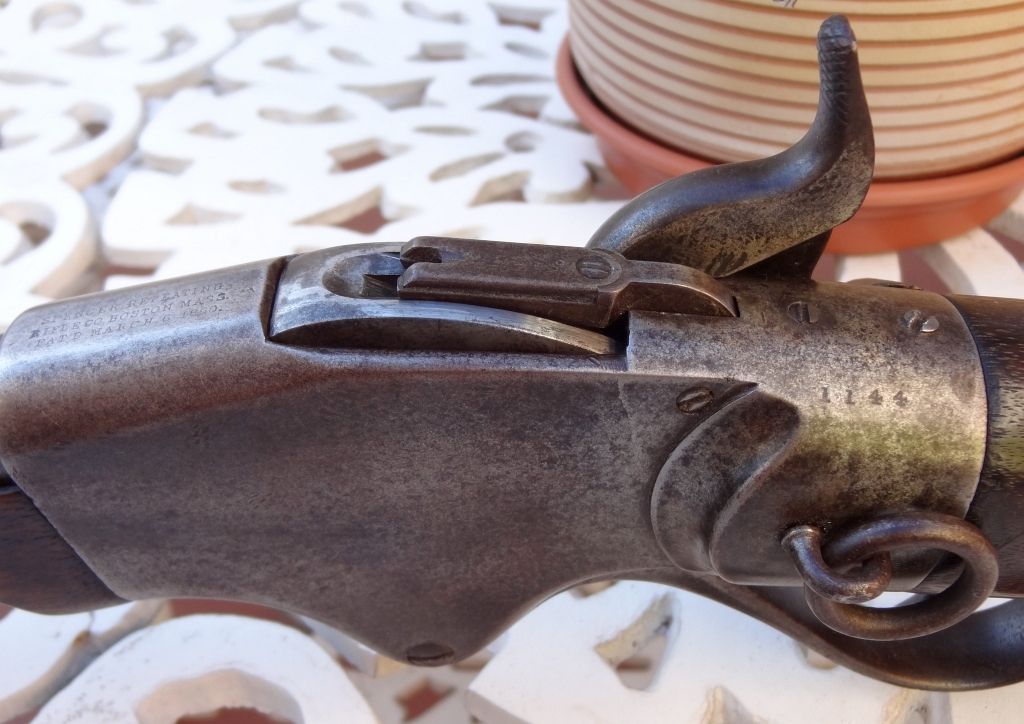Spencer Rifle Serial Number Search
The Spencer Carbine made its appearance during the Civil War, and many of these government-purchased arms were re-issued in the 1870s for service on the frontier. These guns utilized a spring-loaded seven-shot tube magazine that was located in the buttstock.
In post-war models, a patented magazine cut-off prevented the breechblock from traveling far enough to the rear to accept a magazine-fed cartridge. This allowed soldiers to load and fire single rounds, with the ammunition contained in the magazine kept in reserve. The serial number on this carbine indicates it was made c.1863-1865 in cal..52 rimfire (56-56) and converted by Springfield Armory c. 1867-1874 to.50 cal. By sleeving the barrel. Xxx Of Star Plus Actresses.
SN 50266 Christian Minor Spencer was born in Manchester, Connecticut on June 20, 1833. At age 11, he went to live with his maternal grandfather, Josiah Hollister, a veteran of the Revolutionary War. It was there that young Christian learned the rudiments of wood- and metalworking. By the age of 14, Spencer was apprenticed to the Mount Nebo Silk Manufacturing Co., located in South Manchester, Connecticut. This firm was owned by the Cheney family, one of New England's most enterprising and influential families. After a year, he entered a second apprenticeship, this time with local machinist Samuel Loomis. In late 1850, Spencer returned to the employ of the Cheneys as a machinist.

During this period, he perfected several experimental machine designs, and in the process, he developed what would be a lifelong relationship with the Cheneys. At the advice of Frank Cheney, Spencer worked as a toolmaker in Rochester, New York, then as a machinist in the locomotive repair shops of the New York Central Railroad. He also worked briefly for the N. Ames Company of Chicopee Falls, Massachusetts, where he received his first formal experience with the manufacture of firearms. His next stop was at the factory of Samuel Colt, where he helped to design many of the specialized machines used in the production of Colt revolvers. Call Duty Modern Warfare 3 Game Download Free Full Version on this page.
The serial number on this carbine indicates it was made c.1863-1865 in cal..52 rimfire (56-56) and converted by Springfield Armory c. 1867-1874 to.50 cal. By sleeving the barrel. Christian Minor Spencer was born in.
Christian renewed his employment with the Cheney family in 1854 when, at the age of 22, he became superintendent of his benefactor's new silk ribbon manufactory in Hartford. During this period, Spencer designed and patented a machine to attach labels to spools, thus allowing one shop girl to do the work of three. The Cheneys paid Spencer a $25 royalty on every machine he produced. Although working 11 hour days six days per week, Spencer began to experiment with an idea for a breech-loading repeating firearm. By 1859, with the encouragement of both his father and the Cheneys, he had perfected a lever-action rolling block rifle design, and on March 6, 1860, he was awarded a U.S.
Patent for his work. With financial backing from his father, Ogden Spencer, a prosperous wool merchant, Christian was able to secure the services of Luke Wheelock, an experienced gunsmith, for the production of prototype firearms. Spencer also befriended Richard S. Lawrence, then superintendent of the Sharps Rifle Manufacturing Company, and this association most likely influenced certain aspects of Spencer's design. By the spring of 1861, civil war had come to America, and the Cheney family entered into a contract with Spencer in which all rights and patents for Spencer's rifle design would be assigned to them. In return, Spencer would receive a royalty of $1 for every rifle produced. This was later lowered to 50 cents for each military arm produced.